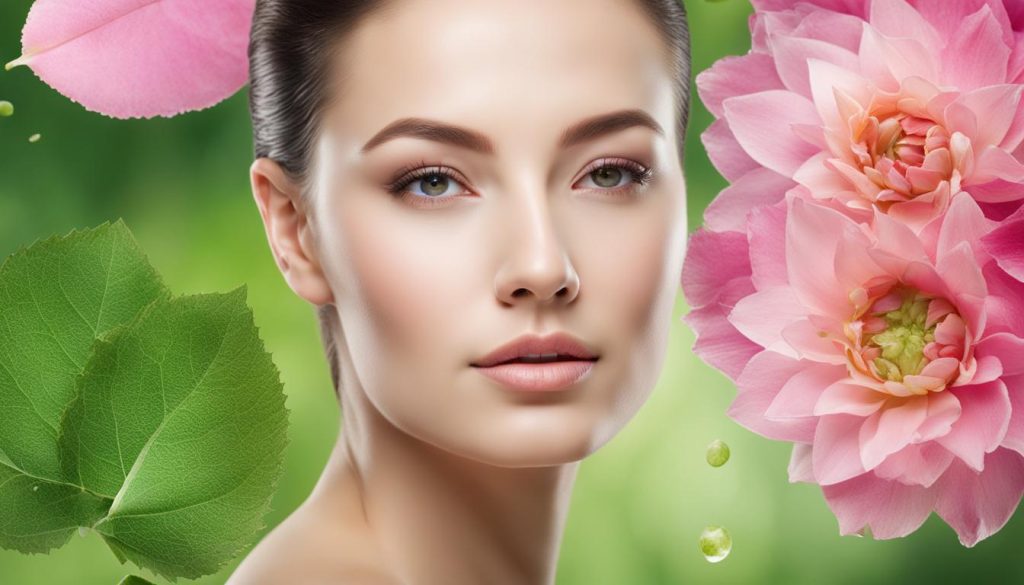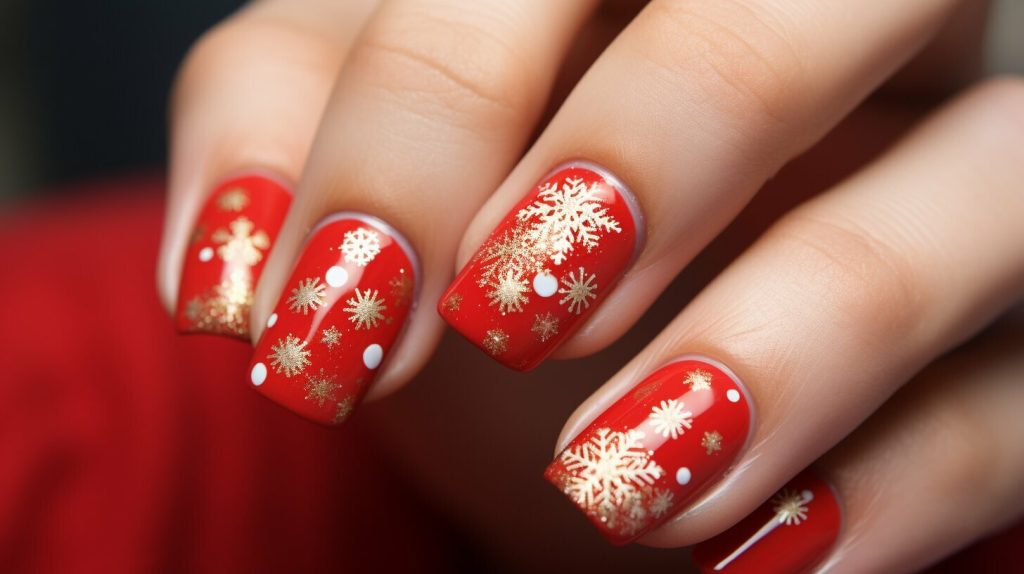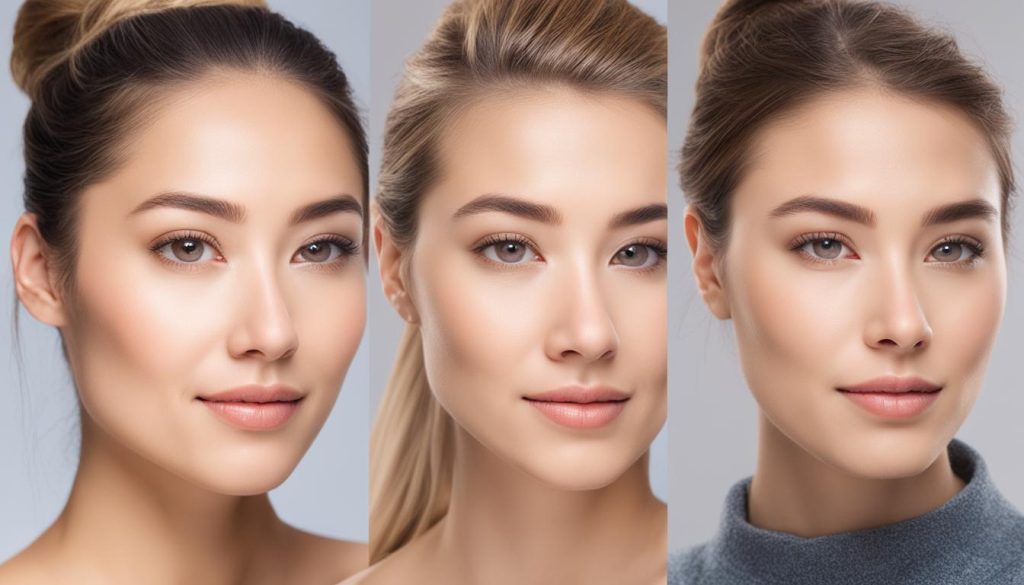As someone deeply enthralled by the transformative power of skincare, I’ve witnessed how the concept of skin cycling has begun to turn heads in the beauty community across the United States. At its core, skin cycling is a mindful approach aimed to rejuvenate skin with a methodical system, enhancing skin health through a strategic application of powerful treatments. This technique not only fosters skin renewal but also ensures proper skin cell turnover, which is vital for a radiant complexion. Embracing skin care cycling means intentionally providing your skin with periods of rest, using targeted products that promote regeneration without overburdening the delicate skin barrier.
Through my journey, I’ve realized that to achieve a refreshed and youthful visage, one must practice patience and persistence. Integrating skin cycling into my regimen has been a game-changer, drastically reducing sensitivities while unveiling a more vibrant and healthy-looking skin. It beckons as a beacon of innovation, guiding us towards a revitalized self-image through the meticulous care of our largest organ.
Skin Cycling
- Discover the significance of incorporating a skin cycling routine to rejuvenate and refresh your complexion.
- Learn how skin care cycling can reduce sensitivities and foster optimal skin renewal and skin cell turnover.
- Understand the importance of rest in your skincare regimen to prevent inflammation and irritation.
- Explore the benefits of adapting skin cycling to personalized skincare needs to achieve a healthier, more radiant appearance.
- Embrace the potential for heightened confidence that comes from nurturing your skin’s vitality through this innovative method.
Understanding Skin Cycling and Its Rise to Popularity
As a journalist and an avid follower of skin care trends, I’ve observed a significant shift towards more strategic beauty routines. Among them, skin cycling has emerged as a transformative regimen attracting both skincare enthusiasts and professionals. The core premise revolves around maximizing the benefits of skin cycling through a disciplined approach to product application, ensuring each stage of the cycle effectively addresses different skin care needs.
What Exactly Is Skin Cycling?
At its heart, a skin cycling routine is a systematic approach to applying skin care products over a four-night cycle. This includes a night for exfoliation, followed by a night dedicated to retinoid application, succeeded by two nights of critical recovery involving intense moisturization and barrier repair. I’ve noted that the technique isn’t just about knowing how to do skin cycling, but understanding it as a deliberate sequence designed to tap into the skin’s natural regeneration without overwhelming it.
The Origins of the Skin Cycling Trend
Originated by the esteemed Dr. Whitney Bowe, skin cycling has rapidly gained a following for its straightforward, yet effective, approach to skin care. Videos explaining the process and showcasing astonishing results have gone viral on platforms like TikTok, proving that skin cycling care resonates with a vast audience seeking clarity in their skincare practices.
Dermatologists appreciate the method’s recognition of skin’s inherent cycles and advocate for the strategic use of potent ingredients. Through this method, the question of is skin cycling good for your skin? is repeatedly answered affirmatively by the glowing testimonials of those who have incorporated products for skin cycling into their daily lives.
The Science Behind Skin Cycling
As a die-hard skincare enthusiast, I’ve always been intrigued by the notion that our skin operates on its own schedule, much like the most punctual of timepieces. It’s this natural skin cycle that forms the backbone of the skin cycling practice—a concept I’m eager to explore further. The journey of understanding skin cycling begins with the skin turnover process, a phenomenon that ideally renews our skin every 28 days or so, revealing a fresher, more vibrant layer beneath.
When delving into the mechanics of skin regeneration, it was fascinating to discover that it’s not just about shedding the old, but also about building the new. Skin cycling capitalizes on this with a strategically timed application of key rejuvenating agents. Exfoliation serves as the grand opener, gently bidding farewell to dead skin cells and setting the stage for the powerful act two: retinoids. These agents take the lead in the rejuvenating process, spurring collagen production and accelerating cellular renewal.

- Exfoliation phase: It’s not just about clearing the surface; it’s a meticulous prelude that enhances the absorptive capacity of the skin.
- Retinoid phase: Here’s where the magic of skin rejuvenation occurs, compelling skin cells to regenerate more rapidly yet responsibly.
- Recovery phase: This is the intermission your skin craves for skin repair and reinforcement of the skin’s barrier function.
But the true artistry of skin cycling emerges in the interplay of activity and rest—a harmony of healthy skin turnover thanks to the restorative breaks intentionally placed within the cycle. It’s here that the skin is given room to breathe and the opportunity to fortify itself against environmental adversaries. That means, instead of relentlessly bombarding our complexion with potent ingredients, the methodical embracing of pauses ensures the skin’s resilience is not only respected but bolstered.
In crafting my nightly regimen, I now see skin health not as a constant uphill battle but as a well-orchestrated symphony—timing, tempo, and the occasional rest are essential. And so, with each cycle of exfoliation, rejuvenation, and repair, my appreciation for the natural genius and intricate beauty of our skin’s ability to care for itself only deepens.
Adapting Skin Cycling for Different Skin Types
As someone deeply invested in skincare, I’ve observed how the concept of skin cycling for sensitive skin and other skin types has been gaining ground. The incredible thing about skin cycling is its adaptability. It’s not a one-size-fits-all routine, and with the right tweaks, individuals with sensitive or reactive skin can also embrace face cycling to achieve a glowing, healthy complexion.
Catering to Sensitive and Eczema-Prone Skin
Sensitive and eczema-prone skin can react unpredictably to common skincare ingredients, often leading to irritation. That’s why dermatologists like Dr. Kseniya Kobets recommend a tailored approach to skin cycling. The key is to modify the intensity and frequency of the active ingredients to avoid overwhelming the skin.
- Begin with less frequent exfoliation, possibly once a week.
- Choose milder exfoliants that are less likely to cause redness or inflammation.
- Gradually introduce other actives, such as retinoids, to allow the skin to build tolerance.
- Monitor the skin’s response and adjust the routine accordingly.
By treating the skin gently and giving it time to recover, people with sensitive skin types can benefit from the regenerative powers of skin cycling without adverse effects.
Modifying the Cycle for Retinoid Tolerance
Building a tolerance to retinoids is essential when incorporating them into a skin cycling regimen. Since retinoids can be potent, it’s important to introduce them slowly and with caution.
- Start with a lower concentration of retinoids and use them only once a week.
- Apply a buffer layer of moisturizer before the retinoid to reduce direct skin contact.
- Gradually increase frequency as your skin acclimates, stepping up to twice a week and beyond.
- Always observe how your skin responds and pull back at any signs of excessive irritation.
These modifications are crucial for maintaining the integrity of the skin’s barrier function while benefitting from the transformative effects of retinoids.
Step-by-Step Guide: Implementing the Skin Cycling Routine
Embarking on a skin cycling process has become a transformative journey for my complexion. It’s a strategic and gentle roadmap designed to optimize your skin’s health over four nights. As someone keen on maintaining youthful and vibrant skin, let me walk you through the skin cycling steps that have reshaped my nightly routine.
Exfoliation Night: Preparing Your Skin
The inaugural night is about sloughing off the old to make way for the new. A chemical exfoliant gently sheds the dead surface layers after thorough cleansing. This is crucial for unlocking the full potential of the retinoids that will follow on the next night. It’s part of what makes the skin cycling rhythm so effective.
Retinoid Night: Targeting Skin Renewal
On the second night, retinoids enter the stage. These potent agents are applied to clean skin to promote cell regeneration and are sandwiched with a soothing moisturizer to curb any irritation. It’s this balance of power and protection that contributes to their remarkable effects on skin texture and radiance.
Recovery Nights: Nurturing and Repairing
Nights three and four are dedicated to recovery, offering hydration and restoration to the natural skin barrier. My post-cleansing ritual includes a rich moisturizer or restorative face oil to replenish moisture and support the skin’s defense system. These nights are a testament to the healing power of giving skin a rest.

Selecting Products for an Effective Skin Cycling Regimen
Identifying the ideal skin cycling products is a critical step for anyone looking to rejuvenate their skin without the risk of irritation. Crafting my personal regimen began with selecting high-efficacy exfoliants that were gentle enough for frequent use, yet potent in promoting skin cell turnover.
Recommended Exfoliants for the Exfoliation Phase
During my exfoliation phase, I incorporate products featuring salicylic acid, glycolic acid, or lactic acid. These key ingredients are the cornerstones of effective products for skin cycling, offering a robust canvas for the subsequent phases of the cycle.
- Salicylic acid for its precision in pore-clearing
- Glycolic acid for its fine line-smoothing capabilities
- Lactic acid for a gentle, yet effective exfoliation
Top Retinol Products Tailored for Skin Cycling
Moving into the retinoid phase, my selection favors over-the-counter formulations, often enriched with vitamin C and ceramides, to sustain my skin’s brightness and moisture balance. For those seeking more robust treatment, prescription-strength retinoids such as adapalene or tretinoin are optimal choices that have been proven to fortify the skin cycling process.
Hydrating Heroes for Recovery Nights
The crux of my recovery nights lies within intensive rehydration. Moisturizers infused with glycerin, hyaluronic acid, or ceramides envelop my skin in a cocoon of hydration, vital for reinforcing the skin’s barrier after the active phases of exfoliation and retinol use.
- Glycerin-based creams for a surge of deep-lasting hydration
- Serums containing hyaluronic acid to bind moisture to my skin
- Nourishing formulas rich in ceramides to restore my skin’s natural protective barrier
The journey to a successfully implemented skin cycling routine is predicated on the thoughtful curation of the right skin cycling products. It not only streamlines my regimen but also amplifies the resiliency and radiance of my skin.
Conclusion
As we delve deeper into enhancing our skin’s vitality, the innovative approach of skin cycling emerges as a pivotal routine in realizing a healthier complexion. My exploration into this method has solidified my belief in its efficacy—meticulously alternating nights dedicated to exfoliation, retinoid application, and recovery tailors a skincare regimen to the body’s intrinsic rhythms. The benefits of skin cycling are multiplicative; not only does it empower products to exert their maximum potential, but it also respects the skin’s need for rest and rejuvenation, ensuring that overall skin health remains at the forefront.
For individuals like myself seeking paths to improve our skincare practices, skin cycling stands out as a beacon of intentionality and precision. The ritual caters to the nuanced needs of various skin types—from the robust to the sensitive—and facilitates the absorption of potent ingredients, such as retinoids, without overwhelming the skin. It’s becoming evident that the dermatological community and fervent skincare advocates alike are recognizing skin cycling for healthy skin as a cornerstone of modern skincare.
As I reflect on the skin cycling journey, one thing is abundantly clear: it is a transformative practice that offers more than just superficial results. It is an investment in the long-term welfare and resilience of our skin. Through a profound understanding and implementation of skin cycling, we invite enhanced health and a luminous aesthetic, revolutionizing the way we nurture and perceive our skin’s innate beauty.
FAQ
What is skin cycling?
Skin cycling is a structured skincare routine that alternates between different types of treatments—exfoliation, retinoid application, and recovery—with the intention of enhancing skin health, promoting cell turnover, and minimizing potential irritation from active ingredients.
What benefits does skin cycling offer?
Skin cycling benefits include improved texture and tone, reduced signs of aging, less inflammation, and sensitivity due to overuse of active ingredients. The process helps facilitate skin regeneration and repair, leading to a healthier and more radiant complexion.
Is skin cycling good for your skin?
Yes, skin cycling can be excellent for your skin. By giving the skin time to rest and repair itself in between treatments, skin cycling can help prevent the irritation that may occur when active ingredients are used too frequently. This routine also ensures optimal efficacy of products by allowing the skin to recover, thereby enhancing the health of the skin barrier.
How should I begin doing skin cycling?
To start skin cycling, you’ll want to establish a four-night cycle starting with exfoliation on Night One, followed by application of a retinoid on Night Two, and culminating in two recovery nights that focus on hydration and repair. It’s recommended to choose suitable products for each phase and to consider your skin’s specific needs.
Can skin cycling be adapted for sensitive skin?
Absolutely. For sensitive skin, skin cycling can be tailored by reducing the frequency or strength of exfoliating and retinoid treatments, and by incorporating extra nourishment and barrier repair on recovery nights. It’s often advised to introduce active ingredients more slowly to build tolerance over time.
What products should I use for my skin cycling routine?
Your skin cycling products should include a gentle chemical exfoliant for exfoliation night, a retinoid or retinol for the second night, and soothing, hydrating products such as a rich moisturizer or face oil for the recovery nights. Choose the products based on your skin type and consider ingredients that support skin repair, like ceramides, hyaluronic acid, and peptides.
Are there specific exfoliants recommended for the exfoliation phase?
Recommended exfoliants for the exfoliation phase of skin cycling generally include chemical exfoliants like salicylic acid, glycolic acid, or lactic acid, which help to remove dead skin cells efficiently without being too harsh on the skin.
What retinol products are suggested for skin cycling?
For the retinol phase, it’s essential to choose products based on your skin’s tolerance and needs. Over-the-counter retinol with supplementary ingredients like vitamin C and ceramides can work well. Prescription-strength retinoids like adapalene or tretinoin may be suitable for those requiring more intensive treatment, provided they’re used according to tolerance levels.
How do I select the right products for recovery nights?
For recovery nights, look for products that focus on hydration and barrier repair. Ingredients like ceramides, glycerin, and hyaluronic acid are excellent for rehydrating and nourishing the skin. Choose moisturizers or serums that alleviate any potential dryness or irritation resulting from active treatment nights.
What should I do if my skin reacts negatively to skin cycling?
If your skin reacts negatively, first take a break from active ingredients and focus on gentle cleansing and moisturizing. Then, assess your routine, potentially decreasing the frequency of active treatments. Consult a dermatologist if persistent irritation or allergic reactions occur; they can help tailor the skin cycling process to better suit your skin’s needs.






